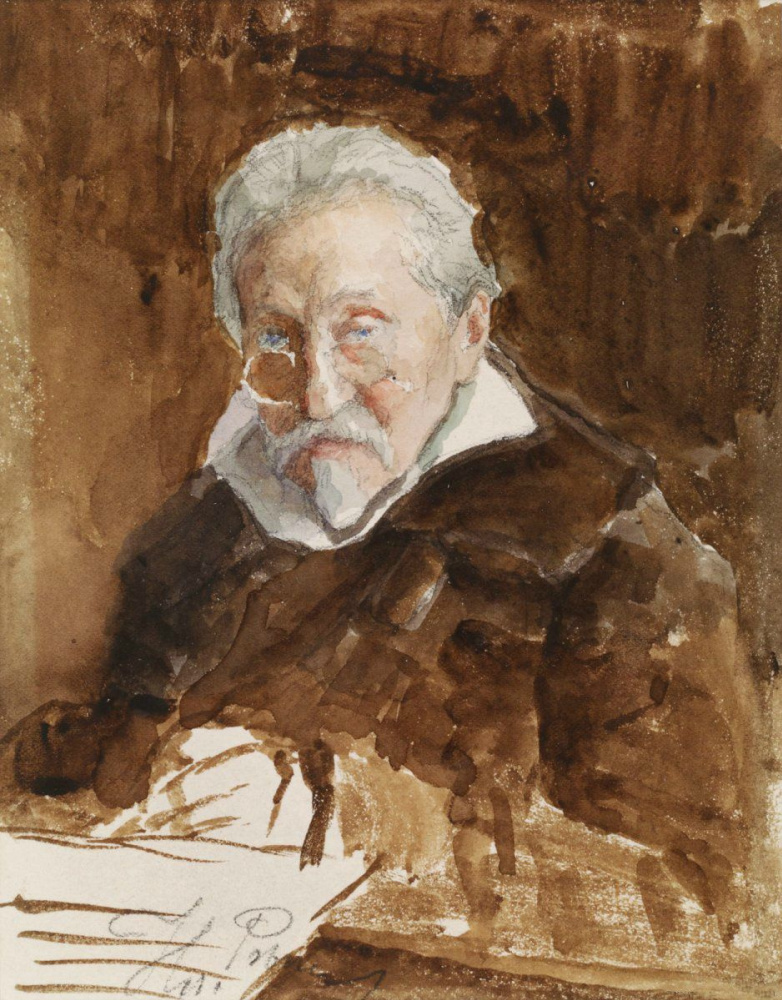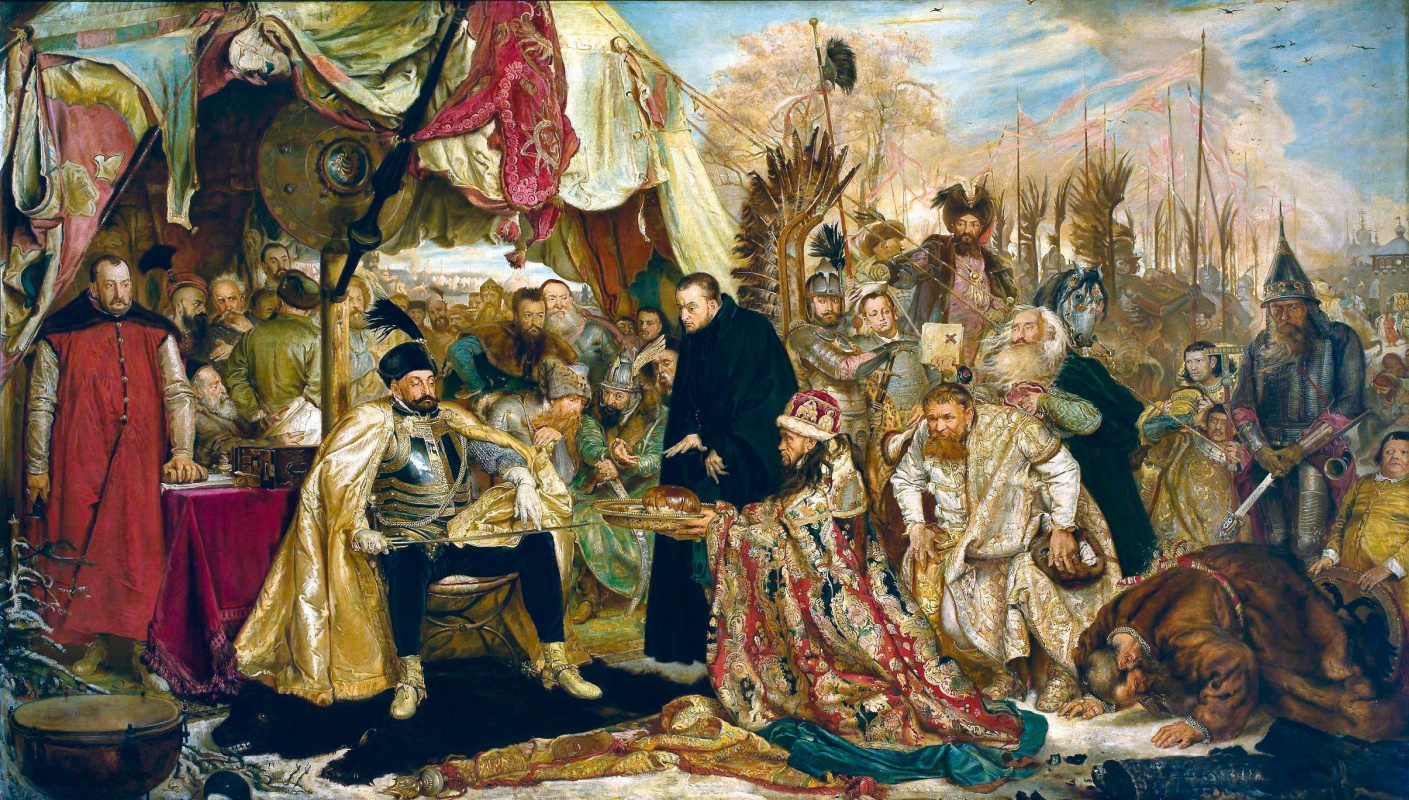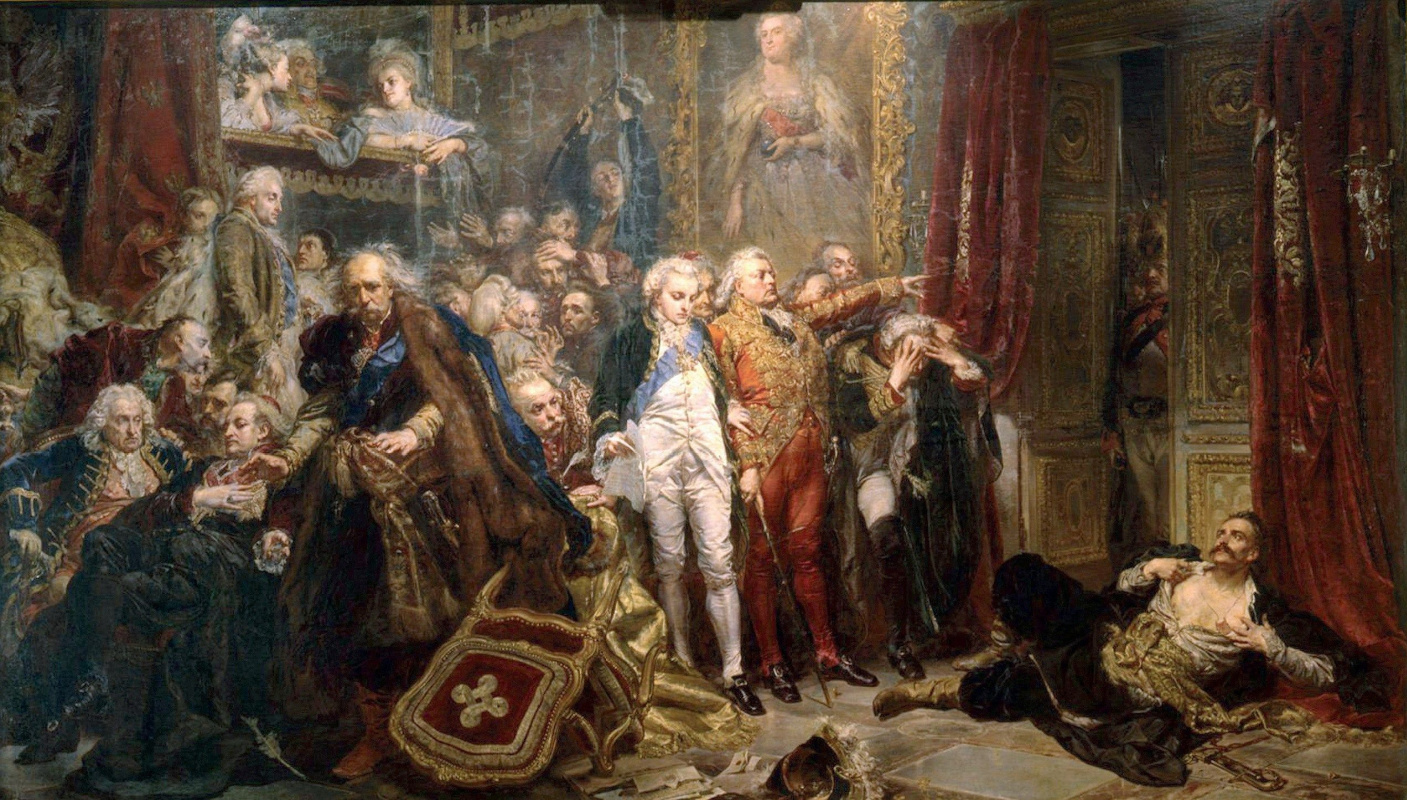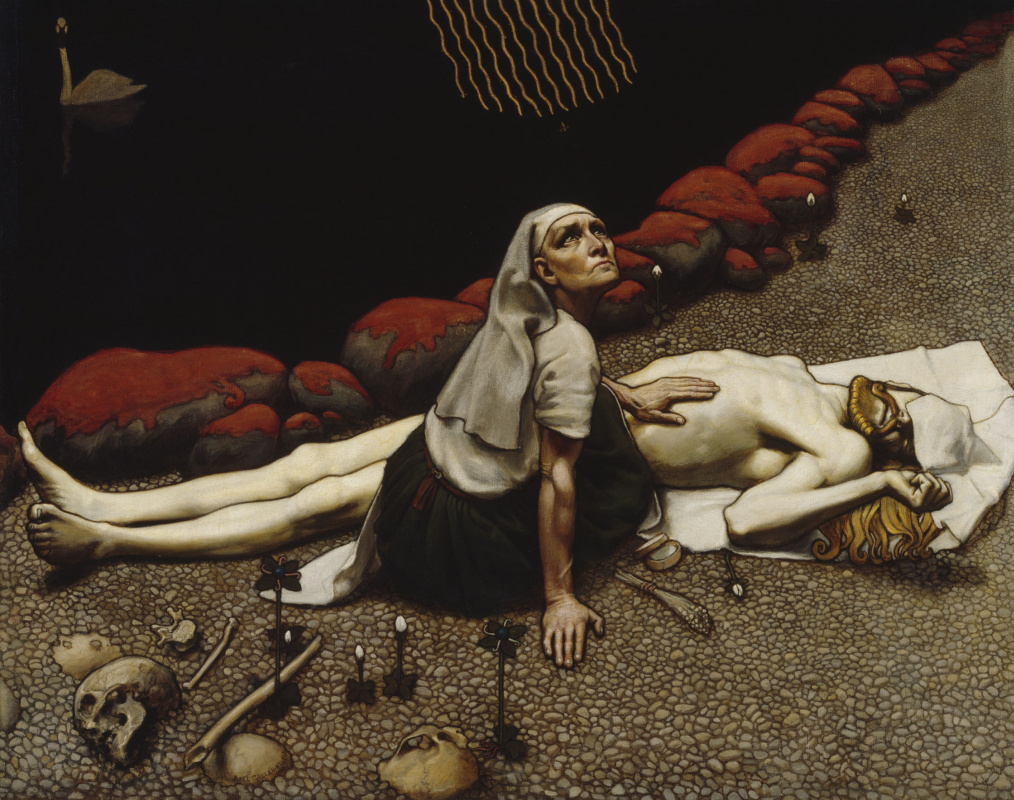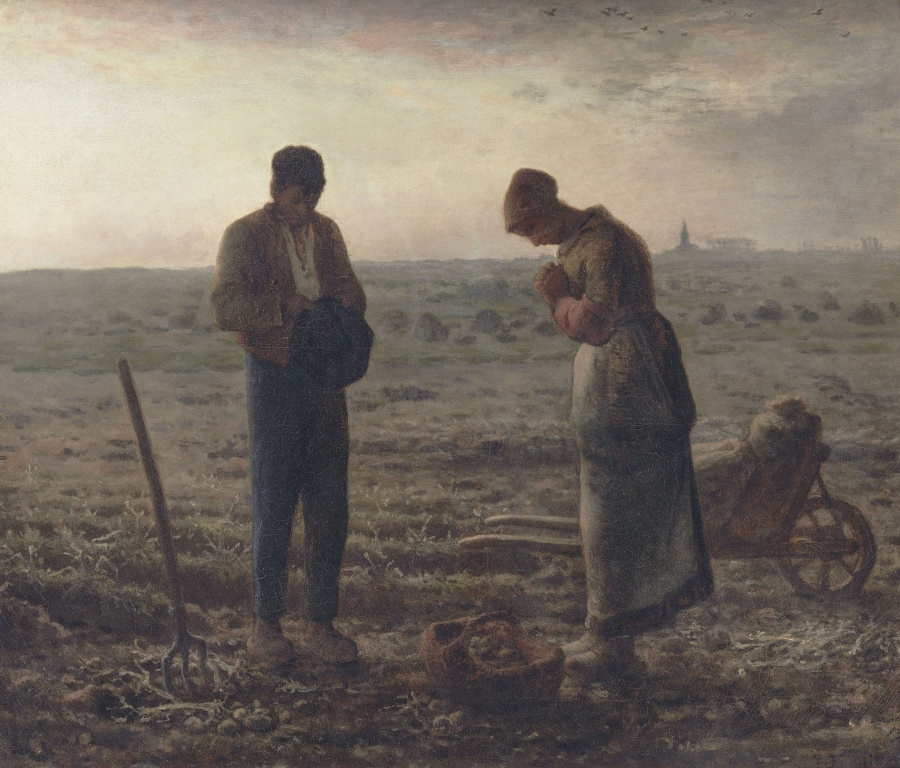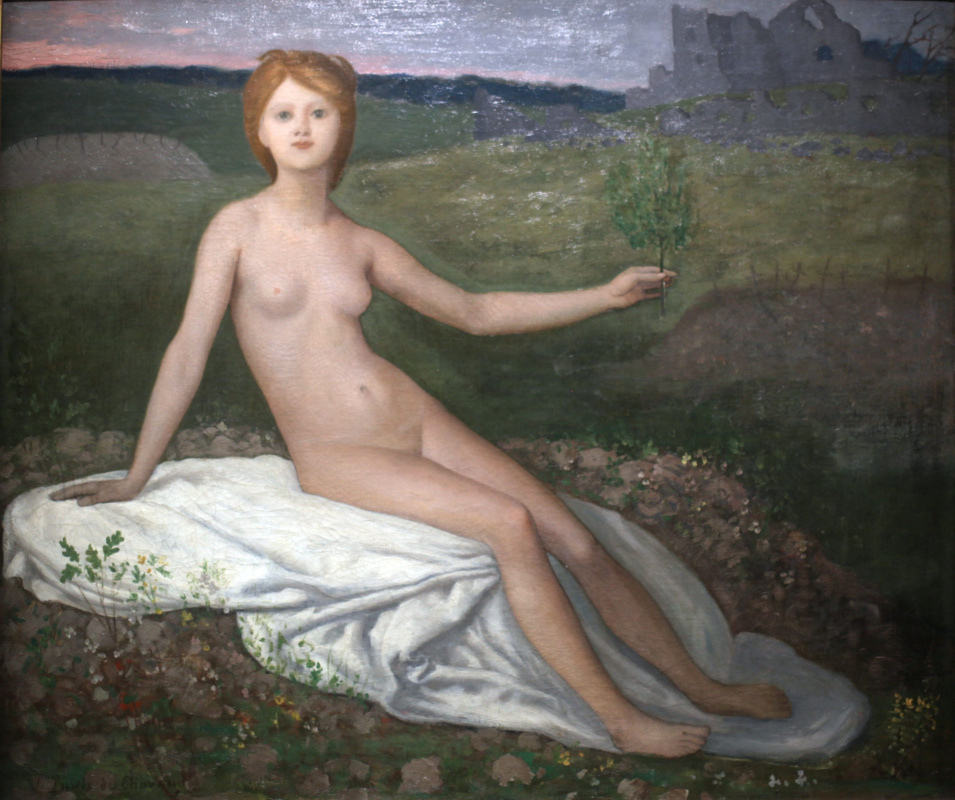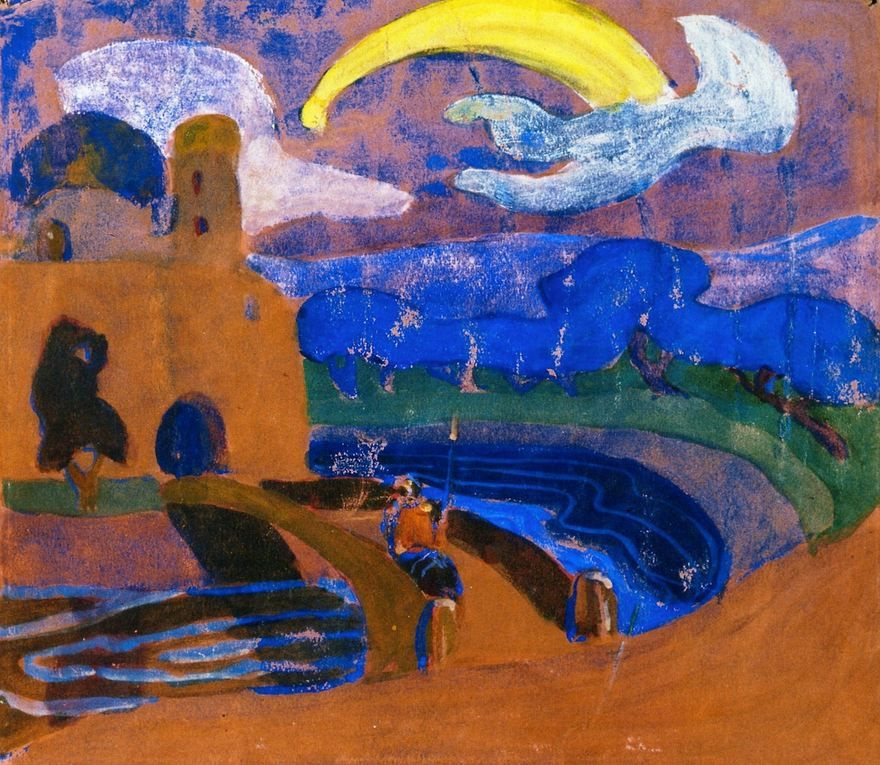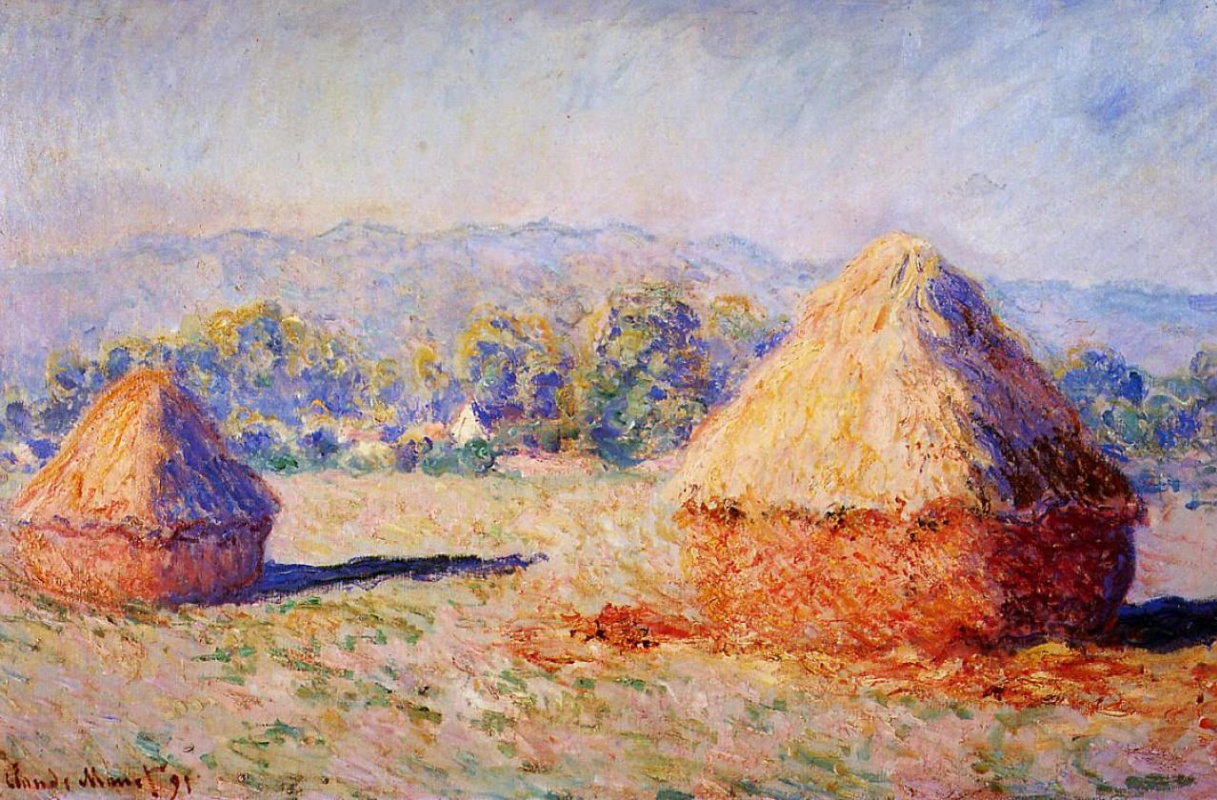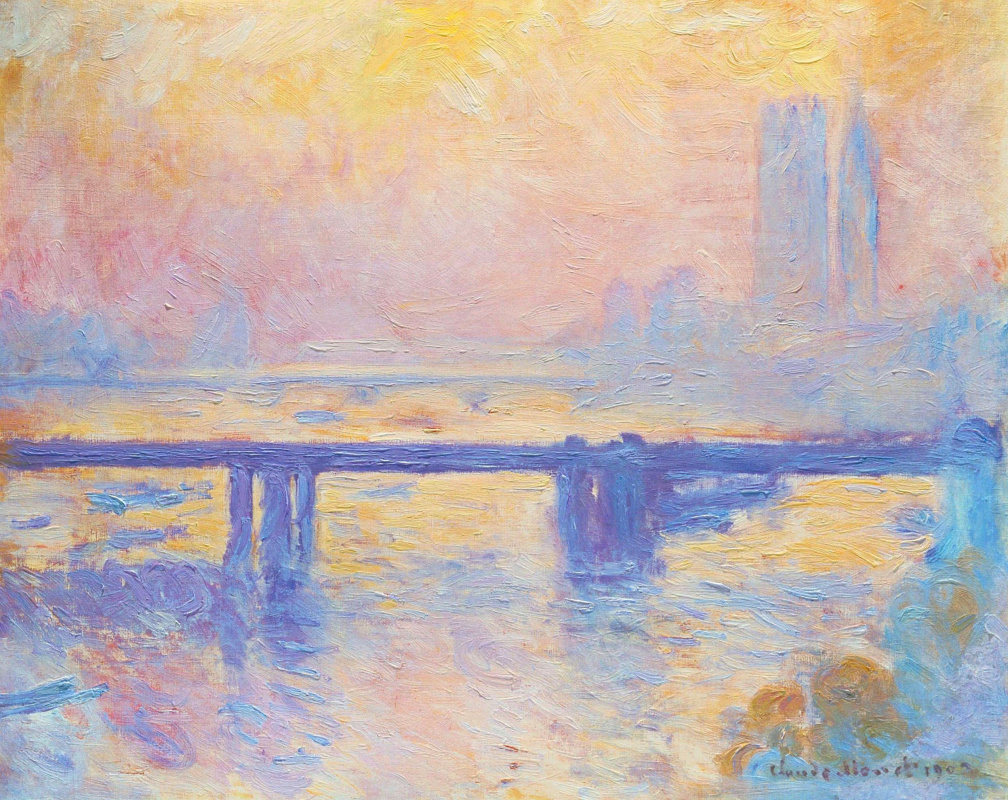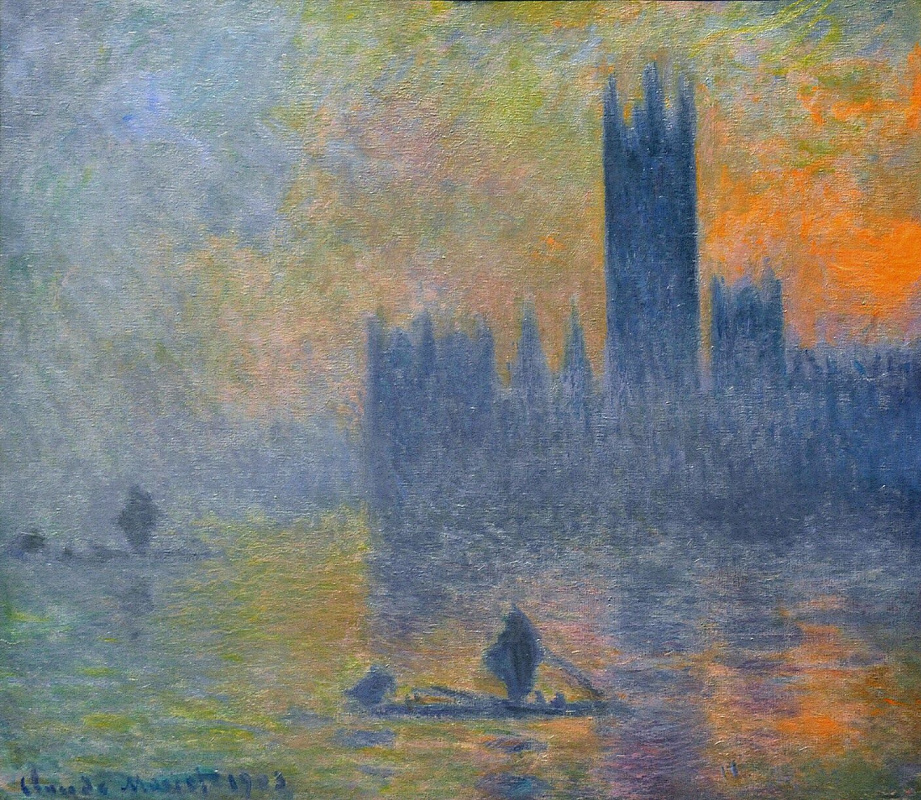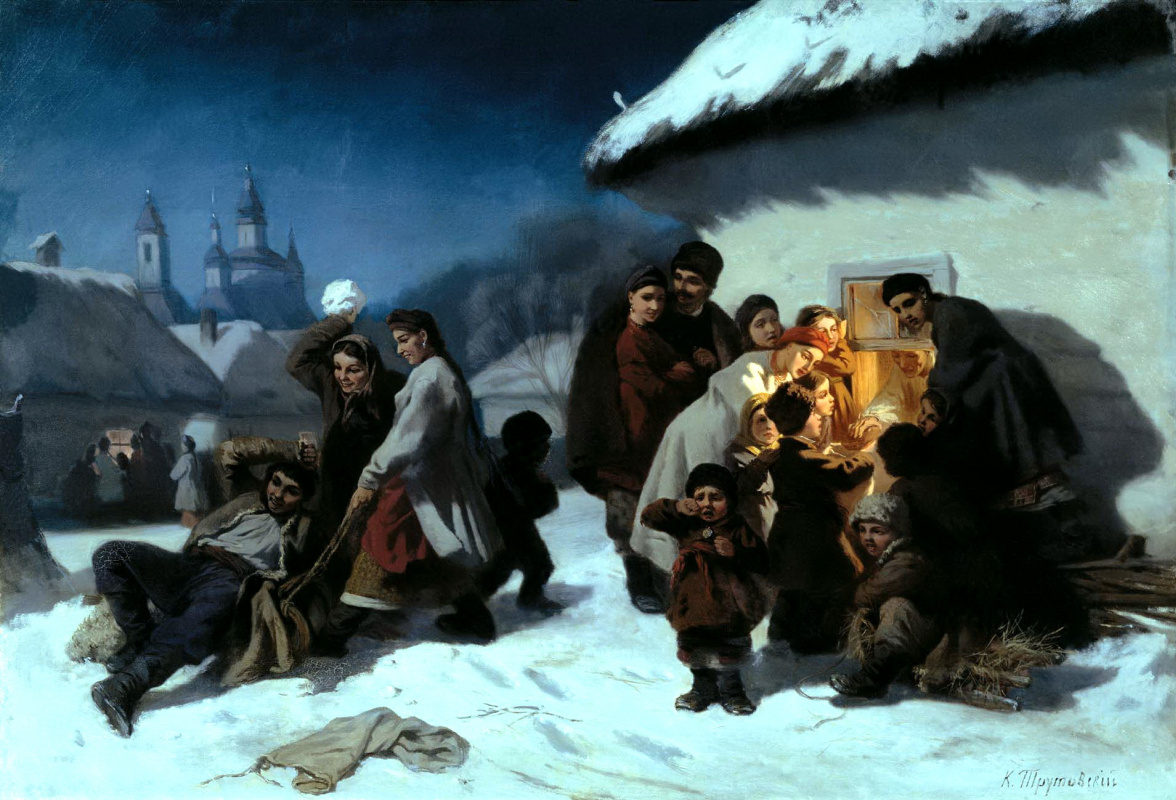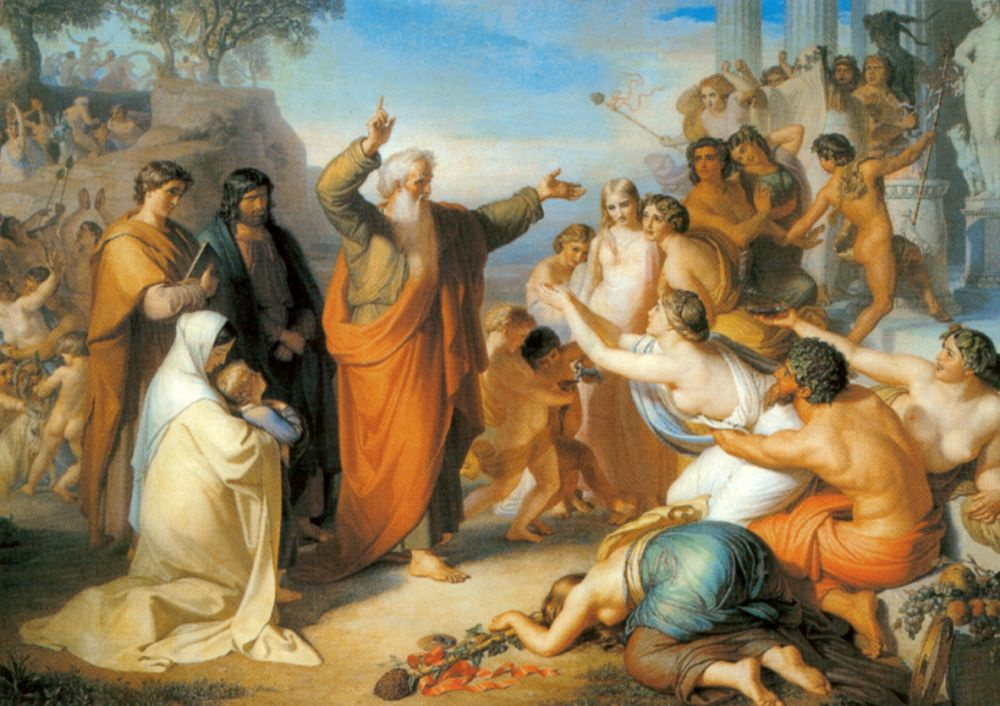The turning point from classical to modern in Russian art took place in long-forgotten past that is covered with fluffy archival dust. But at the turn of the 19th and 20th centuries, this was the most acute confrontation with ad hominem attacks.
The miriskusniki destroyed reputations and overthrew the former idols from their pedestals. Outraged by such barbarism, Repin defended "those thrown off from the steamer of modernity", but the main thing was that he debunked new cult figures, making mincemeat out of Degas, Millet, Rodin, Monet, Gallen-Kallela, Léon Frédéric, Konstantin Somov and other "cheeky amateurs", according to Repin.
The miriskusniki destroyed reputations and overthrew the former idols from their pedestals. Outraged by such barbarism, Repin defended "those thrown off from the steamer of modernity", but the main thing was that he debunked new cult figures, making mincemeat out of Degas, Millet, Rodin, Monet, Gallen-Kallela, Léon Frédéric, Konstantin Somov and other "cheeky amateurs", according to Repin.
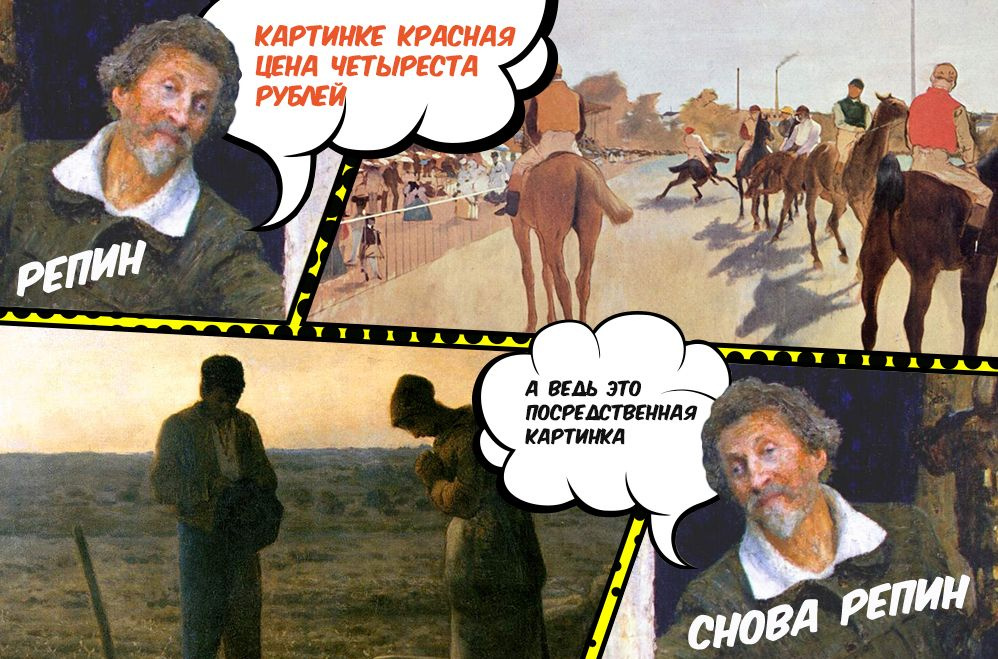
Self-portrait
1920-th
, 17.5×13.5 cm
Arthive decided to take a closer look at the paintings and artists whom Ilya Repin defended so eagerly and heartfully, and especially those whom he scolded so ingeniously. We call upon Repin himself.
Ilya Repin: "I was especially unpleasantly struck by the opinion of the magazine (Mir Iskusstva — ed.) about the famous historical artist, Polish, Matejko… Reporting about Matejko’s large canvases at the Vienna exhibition, Igor Grabar calls them ‘lifeless dry masses, without a sign of artistic temperament (!), without a spark of any attraction, except for the patriotic one.' ‘All this was considered art,' says Grabar in amazement. Obviously, he is blind to see all the stunning tragedy of these historical paintings and the unforgettable plasticity of figures and persons, paramount in their character and form, inhabiting the Matejko’s paintings".
Ilya Repin: "I was especially unpleasantly struck by the opinion of the magazine (Mir Iskusstva — ed.) about the famous historical artist, Polish, Matejko… Reporting about Matejko’s large canvases at the Vienna exhibition, Igor Grabar calls them ‘lifeless dry masses, without a sign of artistic temperament (!), without a spark of any attraction, except for the patriotic one.' ‘All this was considered art,' says Grabar in amazement. Obviously, he is blind to see all the stunning tragedy of these historical paintings and the unforgettable plasticity of figures and persons, paramount in their character and form, inhabiting the Matejko’s paintings".
Stephen Batory near Pskov
1872, 322×545 cm
Tadeusz Reitan. The fall of Poland
1866, 282×487 cm
Ilya Repin: "This trend is decadent, literally. Its ideal is an art atavism. Dilettantism is considered the principle of the school."
Ilya Repin: "The mediocre Léon Frédéric was presented at the last international exhibition in overwhelming quantities, as an example of the modern drawing school. I feel sick at the mere recollection of his swollen babies, like in alcohol cans, like dead, with all his inability to draw and paint. Meanwhile, all this countless number of exercises by this stupid amateur, annoyingly poisoning the entire exhibition, has already been acquired by our patrons for the edification of the Russian school."
Ilya Repin: "The mediocre Léon Frédéric was presented at the last international exhibition in overwhelming quantities, as an example of the modern drawing school. I feel sick at the mere recollection of his swollen babies, like in alcohol cans, like dead, with all his inability to draw and paint. Meanwhile, all this countless number of exercises by this stupid amateur, annoyingly poisoning the entire exhibition, has already been acquired by our patrons for the edification of the Russian school."
Allegory Of Fertility
1888, 18×14 cm
Ilya Repin: "However, they (the miriskusniki — ed.) do not consider him (Léon Frédéric — ed.) a genius. Their genius is Finn Gallen. He is a sample of the artist’s wildness. His ideas are the madman’s ravings, his art is close to the scribbles of a savage."
She put her mask off
1888
Mother Lemminkäinen
1897, 85.5×108.5 cm
Ilya Repin: "Landscape painters, such as Monet, Rosier and many many slaves of the new epidemic, Anquetin, Condor and other cheeky amateurs have sensed the ground for anarchy in art and are making their career. All young Finns, and our Alexandre Benois, K. Somov, Malyutin and other dropouts, reverently study
the manners of these fighters for ignorance in art and hope for glory among future generations. Their enemies are academies. They execrate traditions, knowledge, logical observation of the form laws and nature colours, as if they were the greatest vice in art. They recognize their right to restart art and fill the whole world with it, destroying everything ‘academic'. They need to overthrow the authority of academic education in art first, and replace it with dilettanteism."
Ilya Repin: "The intrigue of a smart shopkeeper presumes confusing amateurs, bewildering buyers, deceiving them into the belief that various insolent daubs contain unknown secrets, making a fuss at the stock exchange about insignificant pictures by their chosen one. Not so long ago, the Russian public saw mediocre pictures by Degas (Edgar Degas — ed.) and was stunned by their prices. For 40,000 roubles, Jockeys were on sale! (the picture won’t fetch more than 400 roubles), Americans offered Durand-Ruel 100,000 francs (there is a telegram from America). Russian amateur gentlemen offered 25,000 roubles (fact). And 40,000 roubles would do. If only they talked more. There will be a repetition of the story with Millet’s The Angelus, which left for America for 550,000 francs, but which returned to Paris for 600,000 francs, fortunately for France. Nonetheless, this is a mediocre picture."
Jockeys (Race horses before the stands)
1868, 46×61 cm
Angelyus (Evening prayer)
1850-th
, 55.5×66 cm
Ilya Repin: "The exchange price determines the merits of a work of art now. Art dealers must replace professors: they know the needs and tastes of buyers. They are now omnipotent creators of the artists' glory, the name and well-being of European painters entirely depends on them. The press, great power, is also in their hands. Interest in a work of art depends on the stock market game for it. Make a fuss around a picture and make a fortune is the secret of the modern artwork success. They certainly cannot do without a genius, an idol. Until recently, the modest, mediocre Puvis de Chavannes was such an idol. He died. We need a new one, just as harmless…"
Hope
1871
Ilya Repin: "In sculpture, their genius is Rodin. The statues of Balzac, like the statue of Eve we had at the French exhibition, are already close to the stone images that decorated the Scythian graves in southern Russia. This trend has already called to life legions of imitators in all kinds of art."

Auguste Rodin. Statue of Honoré de Balzac. Statue of Eve.
Ilya Repin: "Mr. Grabar boasts that he has comprehended Whistler's twilight tone — down with everything that is not in the twilight tone! A young man with education, with energy, who has seen a lot, and such narrow-minded, such cramped! He encroached on Matejko!
Hurry up, gentlemen, it is not difficult to predict that in less than 10 years, your vaunted decadentism and your ignorant dilettanteism will develop — very naturally, like all tares and weeds, to self-devouring size, — become so vulgar, so disgusted, that all amateurs will hunch their shoulders and shake their heads, saying: ‘And it was called art so recently!'
And Matejko will still be a colossus, and his national value will never even come into contact with the assessment of a picture shop. And your pygmy spits won’t even reach the foot of his pedestal."
Hurry up, gentlemen, it is not difficult to predict that in less than 10 years, your vaunted decadentism and your ignorant dilettanteism will develop — very naturally, like all tares and weeds, to self-devouring size, — become so vulgar, so disgusted, that all amateurs will hunch their shoulders and shake their heads, saying: ‘And it was called art so recently!'
And Matejko will still be a colossus, and his national value will never even come into contact with the assessment of a picture shop. And your pygmy spits won’t even reach the foot of his pedestal."
Arrangement in grey and black No. 1. The artist's mother
1871, 144.3×162.5 cm
Ilya Repin: "Recently, in one house, I saw pictures from your exhibition on the wall and involuntarily blushed and rather averted my eyes. What hangs at the curiosities exhibition is funny; but hang these screaming eccentricities in the living quarters!.. They hung a picture upside down for a whole year. The author saw it, got offended; they re-hung it and saw the same spots, and no one understands again what is depicted by the artist."
Comet
XX century
Ilya Repin: "Yes, obviously you are hypnotized, blinded and climbing the wall. Insert Neff's Nymph into a painting by Puvis de Chavannes, and you will melt with praise and pleasure. You would have extolled the young Ivan the Terrible from Pleshanov's painting, if you had seen him on Delacroix's canvas."
Ilya Repin: "You have no sense of respect for such venerable original talent, which Aivazovsky has always been. If your insane ramolissement in painting by Monet, who always starts off with yellow and lilac meaningless tonics, at least once achieved such a general pictorial impression, typical of Aivazovsky's The Flood, you would have lifted him up on your shields and trumpeted to the whole world. And this probably would have happened only if Aivazovsky’s paintings had piled up as property of Durand-Ruel."
The flood
1864, 246.5×319 cm
Ilya Repin: "Try to take Ingres away from the French, Overbeck from the Germans!.. They are not ashamed of these artists, their historical significance is firmly established. And our Moller has one drunken Bacchante, in his John on Patmos painting, which can downweigh many of their paintings.
In each of the pictures you have listed, there are advantages and features that are important in the growth of our school; not to mention such a talented artist as Trutovsky, whose Kolyadki are so characteristic and fresh, and even in line with the spirit of the current general impression pictures, that your encroachment on it is not clear even from your point of view of art: it has no sign of academicism".
In each of the pictures you have listed, there are advantages and features that are important in the growth of our school; not to mention such a talented artist as Trutovsky, whose Kolyadki are so characteristic and fresh, and even in line with the spirit of the current general impression pictures, that your encroachment on it is not clear even from your point of view of art: it has no sign of academicism".
Ilya Repin: "In your philosophizing about art, you ignore the Russian, you do not recognize the existence of the Russian school. You don’t know it, as if you were strangers to Russia. It is easier to talk of the Europeans: David, Delacroix, Baudelaire, Zola, Ruskin, Whistler; you are always chewing the European gum, rather outdated there and with little appeal to anyone here. And, to tell the truth, your exhibitions are still supported by such artists as Serov, Ryabushkin, Edelfeld, Golovin, Davydov, Polenov and others, who do not have an acute decline character, as the poor crippled freak K. Somov, whom you put on the head of your school movement. I know this capable young man and I cannot understand his pretence, his childish stupidity in paints as his green grass, such idiocy as the scenes of his compositions with little broken-off freaks, midgets".
Summer
1904, 10×15 cm
Ilya Repin: "And in the Mir Iskusstva, I highly appreciate the energy of Mr. Diaghilev, his ability to bother, travel far to get the exhibits, settle business with the owners of artworks. Few are capable of this. One cannot but cherish this educated young man who is so fond of art. But I can’t even believe that a person with such a social polish, versatile interest in all kinds of arts (singing, music), that this elegant aristocrat tolerates such painting ugliness as Léon Frédéric, Gallen, such pathetic deformities as K. Somov, Anquetin, Condor and others, and allows these mentioned vulgar antics in the Mir Iskusstva magazine, which undoubtedly rises interest abroad."
From the Editor: The cited sharp polemical statements of Ilya Repin were first published in the 15th issue of the Niva magazine, 1899, and in the same year, they were reprinted in the 10th issue of the Mir Iskusstva magazine along with Sergei Diaghilev’s reply to Repin.
Collected and illustrated by Anna Vcherashniaya






